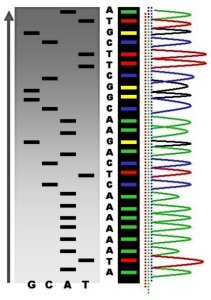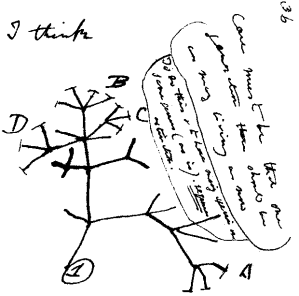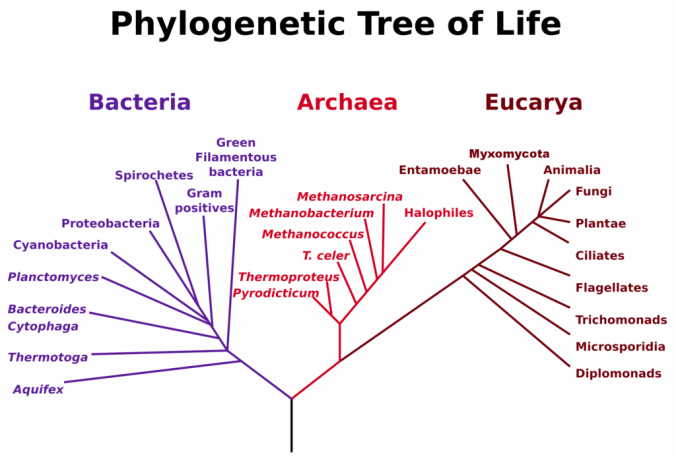How Big is Our Universe?
We are tiny creatures, living out short lives in an immense and ancient universe. We’ve evolved to make sense of the scales of time and space that were relevant for survival of our ancestors, so it is remarkable that we have any inkling at all of just how small we are when we zoom out to the cosmic scale. As Douglas Adams wrote in ‘The Hitchhiker’s Guide to the Galaxy’:
“Space is Big. You just won’t believe how vastly, hugely, mind-bogglingly big it is. I mean, you may think it’s a long way down the road to the chemist’s, but that’s just peanuts to space.”
To try to make sense of the vast distances between the stars and galaxies, lets scale down the universe. It is remarkable that even when we shrink things down quite a lot, we find that it is difficult to keep the sizes from rapidly becoming astronomical once again. This exercise also helps make clear why interstellar travel is such a difficult prospect, and may be nearly impossible to accomplish, even for a very advanced civilization. This is some of the fun you can have on a Saturday afternoon with some imagination, a calculator, and an understanding of how to use scientific notation. So, lets begin!
All right, for our first scale down cosmos we will shrink our sun down to the very manageable size of a 1 inch marble. That’s pretty small right? That is about 2 one hundred billionths of the suns actual size. So, with a 1 inch marble at the center of our solar system, here is what follows. The innermost planet in our solar system, Mercury would be in orbit 3.5 feet from the sun, Venus would orbit at 6.5 feet, and Earth would be a tiny 0.23mm speck (barely visible) sitting 9 feet from the sun. Next comes the planet Mars sitting 13.6 feet from the sun. This is our inner solar system, and so far still pretty manageable – a solar system you could fit fairly easily in your living room.
Next comes the outer solar system with the mighty Jupiter, a speck of 2.5mm flying around the sun at 46 feet from our marble sun. Beautiful ringed Saturn is in orbit at 85 feet, Uranus at 172 feet, and Neptune at 269 feet. Little Pluto, now sadly demoted to a dwarf planet, is in orbit at 354 feet. From that distance our little marble sun would appear tiny, yet it’s the gravitational pull on the tiny dust mote of Pluto that keeps it chained to the solar system. No longer can we hold the outer solar system in our living room. We might need to move our solar system to the park to hold it all.
Think for a moment of how empty our solar system really is. Tiny specks of dust orbiting a tiny star. Our model 1 inch sun holds almost all the mass in the solar system. The rest is just a scattering of microscopic dots out hundreds of feet from the center, with mostly emptiness between them. The solar system is really very very empty, indeed.
The New Horizon space probe, our fastest space craft yet, visited Pluto last year, taking nearly 10 years to make the trip from Earth. How fast can we possibly get through the solar system. Light, traveling at the fastest speed possible in the vacuum of space moves, you guessed it, at the speed of light. At our little solar system scale the light leaving the sun would take 8 minutes just to pass the Earth 9 feet away. After an hour of travel the photons of light would move only 64 feet through our little solar system. That would be somewhere between the orbit of Jupiter and Saturn. Think of a sphere of light traveling in all directions from our 1 inch sun and taking a full hour to move to a sphere with a radius of 64 feet. That seems rather slow, but there is nothing known in the universe that can do better.
On this scale 1 light year (the distance that light travels in one year) would be 107 miles from our little sun, and the closest star to the sun – Proxima Centauri at 4.24 light years away – would be a staggering 454 miles out. Our little 1 inch sun floating alone in the darkness of space with next closest marble sized star being over 450 miles out in the distance. If the sun marble was located in Los Angeles, then Proxima Centauri would be located approximately at 100 miles further north than San Francisco. Is it any wonder that interstellar travel is such a monstrous challenge? To travel between the stars on human time scales seems like an unrealistic dream.
The star Trappist-1, which was recently in the news for having been confirmed to have 7 exoplanets in orbit around it (some of which are in the starts habitat zone) At a mere 40 light years from earth it has been toted has being very close to us indeed. On the scale of our model solar system Trappist-1 would be a small marble 4226 miles from our sun. Again, if our sun was in Las Angeles then Honolulu would be only 60% of the way out to where the little marble of Trappist-1 would have to be placed – that vast Pacific wildness becoming the vast empty ocean between the stars.
From our model sun, the center of the Milky Way galaxy would be 2,675,000 miles away, or about 11 times further out than our moon. The size of the galaxy from end to end would be 10,700,000 miles across. The next large spiral galaxy to us is the Andromeda galaxy and that would be placed 271,000,000 miles away. Now that is getting into scales that match the sizes found in our actual solar system. For example, if our marble sun was sitting in the very center of our actual sun, the surface of the real sun would be 4040 light years on our scale model. The mini Andromeda galaxy would be beyond the orbit of Mars.
Ok, time to change our scale model to make the universe more manageable again. Lets suppose that instead of our sun being 1 inch in diameter, our entire Milky Way galaxy is just 1 inch in diameter. On this scale the Andromeda galaxy is another small disk (a little larger than our Milky Way) just 2.1 feet away from us. The Virgo cluster of galaxies, which contains thousands of galaxies would be 54 feet away, and the edge of the observable universe, 46.6 billion light years away, would be 7.35 miles in every direction from our little 1 inch disk galaxy. I’ve heard of races where runners run “the solar system” and pass the orbits of planets at the appropriate places on their 10K race, but you could do a “Run the Universe” race too, where you run a 10K and pass, not only deeper into space but farther back into time until you reach the very edge of time and space at the finish line. By the way, even though the universe is only 13.8 billion years old the edge is 46.6 billion light years away because the universe expanded much faster than the speed of light in the distant past. Inside the disk of our tiny 1 inch galaxy, the distance from the Sun to Pluto would be just 1.59 Angstroms, which is very nearly the size of a Hydrogen atom.
What if we wish to make our entire observable universe the size of a friendly 6 inch diameter snow globe, so we can put it out on our desk and admire the whole of creation as we do our work? What would that look like? If the observable universe was 6 inches in diameter, then the Milky Way galaxy would be a speck in the very center of the globe (yes, we are in the center of the universe from our vantage point) that was a mere 160 nanometers across. This would be approximately the size of a virus. In fact, all the hundreds of billions of galaxies in your Observable Universe globe would be the size of viruses. I’m not sure you would see anything when you looked in your snow globe universe since the galaxies themselves would be microscopic on this scale, but you could surely feel quite satisfied that when you held your snow globe every galaxy in the observable universe was in the palm of your hand!










